Category Archive 'Science'
25 Feb 2023

In questions of science, the authority of a thousand, is not worth the humble reasoning of a single individual.
– Galileo Galilei
17 Oct 2022


Mark P. Mills, a policy wonk at the Manhattan Institute, explains that the Green Energy Revolution that is supposed to replace the use of fossil fuels in the immediate future is entirely a fantasy, a case of magical thinking that would require the abolition of limits inherent in the laws of physics.
A growing chorus of voices is exhorting the public, as well as government policymakers, to embrace the necessity—indeed, the inevitability—of society’s transition to a “new energy economy.”
Advocates claim that rapid technological changes are becoming so disruptive and
renewable energy is becoming so cheap and so fast that there is no economic risk in accelerating the move to—or even mandating—a post-hydrocarbon world that no longer needs to use much, if any, oil, natural gas, or coal.
Central to that worldview is the proposition that the energy sector is undergoing the same kind of technology disruptions that Silicon Valley tech has brought to so many other markets. Indeed, “old economy” energy companies are a poor choice for investors, according to proponents of the new energy economy, because the assets of hydrocarbon companies will soon become worthless, or “stranded.” Betting on hydrocarbon companies today is like betting on Sears instead of Amazon a decade ago.
“Mission Possible,” a 2018 report by an international Energy Transitions Commission, crystallized this growing body of opinion on both sides of the Atlantic. To “decarbonize” energy use, the report calls for the world to engage in three “complementary” actions: aggressively deploy renewables or so-called clean tech, improve energy efficiency, and limit energy demand.
This prescription should sound familiar, as it is identical to a nearly universal energy-policy consensus that coalesced following the 1973–74 Arab oil embargo that shocked the world. But while the past half-century’s energy policies were animated by fears of resource depletion, the fear now is that burning the world’s abundant
hydrocarbons releases dangerous amounts of carbon dioxide into the atmosphere.
To be sure, history shows that grand energy transitions are possible. The key question today is whether the world is on the cusp of another. The short answer is no. There are two core flaws with the thesis that the world can soon abandon hydrocarbons. The first: physics realities do not allow energy domains to undergo the kind of revolutionary change experienced on the digital frontiers. The second: no fundamentally new energy technology has been discovered or invented in nearly a century—certainly, nothing analogous to the invention of the transistor or the Internet.
Before these flaws are explained, it is best to understand the contours of today’s hydrocarbon-based energy economy and why replacing it would be a monumental, if not an impossible, undertaking.
01 Aug 2021

BBC:
New research indicates that some stained glass windows from Canterbury Cathedral may be among the oldest in the world.
The panels, depicting the Ancestors of Christ, have been re-dated using a new, non-destructive technique.
The analysis indicates that some of them may date back to the mid-1100s.
The windows would therefore have been in place when the Archbishop of Canterbury, Thomas Becket, was killed at the cathedral in 1170.
RTWT
10 Jun 2021

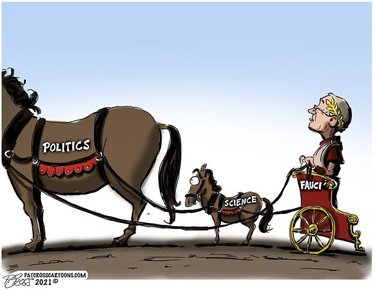
Leighton Woodhouse points out the intrinsic irony of calls for “Faith in Science.”
In The Revolt of the Public, Martin Gurri traces the exalted status of the modern scientist to the mythical figure of the early twentieth century renegade scientific genius, embodied most famously by Albert Einstein. Einstein, Gurri reminds us, was hardly a creature of the academy. He nearly dropped out of high school, and when he began publishing his scientific insights he was working not at a university but at the patent office. But Einstein’s singular genius, combined with his tenacious devotion to The Truth, made him first the equal and then the superior of every credentialed academic in the world. Like Copernicus, the intrepidness of Einstein’s spirit and the independence of his mind elevated him above the banal muck of human affairs, bringing him a step closer to the gods of nature.
This mythological image, Gurri writes, remains the template for our popular conception of the professional scientist. But the myth is wildly at odds with the reality of what science is today.
The modern scientific research industry is like a cross between a giant perpetual motion machine and a game of musical chairs. Scientific research is underwritten, in large part, by a steady stream of government funding. To keep the lights on in their labs, scientists need to tap into that stream. They do so by designing research projects that conform to whatever the government prioritizes at any particular moment. If, for instance, there was just a major terrorist attack and Congress was concerned about the threat of bioterrorism, scientific research that related to that concern would be likely to be fast tracked for funding, so it may be a good time for a savvy principal investigator to start pitching projects aimed at developing vaccines for bioengineered pathogens. The successful scientist is the one who is particularly adept at writing fundable grant applications pegged to some politically salient research objective, and then generating laboratory results that make some sort of incremental progress toward that objective to justify a renewal of that grant funding in the next cycle.
The modern professional scientist is thus less like Albert Einstein than like his co-workers at the patent office. He is a bureaucrat, albeit a highly technical one. His goal is, to be sure, to seek The Truth, but only within the very narrow parameters of what other bureaucrats and politicians have deemed to be questions worth asking.
Anthony Fauci is the Platonic form of the scientist-technician-bureaucrat, which is why he has held his position as one of the top scientists in the nation for decades and through multiple administrations. As a creature of both science and politics, he has made himself indispensable as an interface between the two worlds and as the individual best positioned to mold the former to suit the needs of the latter. After 9/11, he transformed NIH into the agency at the front line of defending America against the imminent threat of jihadis armed with weaponized plague viruses. He championed “gain-of-function” research, which essentially meant building those superviruses before the terrorists did, the better to find vaccines for them. And once the Islamic terrorist threat faded a bit from our collective memory, he re-tooled this heftily-funded research into humanity’s front line of defense against Mother Nature, “the worst bioterrorist.” Unfortunately for Fauci, in the process, he may have — oops! — created one of the biggest pandemics in human history. …
At every such juncture, we’ve been admonished to “believe the science.” But this is not science; it’s politics. Science demands a reflexive posture of skepticism toward received wisdom, tempered by trust in empirical evidence. Bowing habitually to expert authority on the strength of titles and credentials is the antithesis of the scientific mindset. It is precisely what Democrats adopted the “party of science” moniker to reject: willful obedience to those who hold cultural and political power.
RTWT
02 Nov 2020

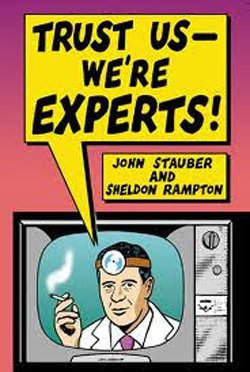
Pasha Kamyshev (Pierson 2009) correctly observes that politicization of Science and arguments consisting only of appeals to credentialed authority have widely underminded respect for experts and what purports to be science.
My current view is that large numbers of fields which are considered “scientific†in the West are a complete mess and lack the essential feature of what it means to be a science in the first place. …
Big Tech has fully bought into the frame of “experts†vs “laypeople†as if experts are always “correct†and laypeople are “wrong,†(unless they are repeating a statement by the experts).
If the laypeople are “wrong,†then there has been a massive failure of education to produce correct models for people to use for home reasoning. Obviously, the default answer for many people is to simply pour more money into education. But we lack understanding of what science and science education even are. Science is meant to produce world models, and education is supposed to impart them to everyone else. Neither is doing this, really, and what we have in place of those instructions is one large uncanny valley of ever-changing statement production. …
I have heard stories of professors at Yale in one department being mad about professors in another department teaching p-hacking to students. Inter- and intra-discipline fights are common, which isn’t necessarily a bad thing as long as the overall combined output of the field is correlated with reality. However, the journalistic tendency to signal boost any paper that can have political impact amplifies some fights over others, further screwing up an already shaky system.
So right now science is losing its status among the general population. It is also losing status among those who can actually read statistics. This is both horrifying and encouraging. Without a structured way to sift actual reality into social reality, the social reality will diverge from reality, with further and further breakdown of health and sanity for society.
RTWT
04 Aug 2020

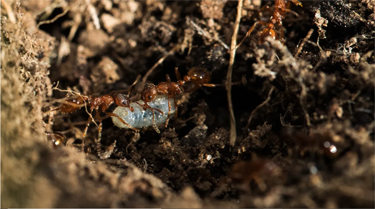
Red ants: step on them before they get out of control.
The College Fix:
Slavemaker ant. Gypsy moth. Rape bug.
These are just three common English names listed in a spreadsheet of 60 plants and animals that have been recently deemed by some academics to have “problematic†monikers.
Herpetologist and University of Arizona Ph.D. candidate Earyn McGee, a science communicator and lizard enthusiast who runs a popular Twitter profile on her reptile expeditions, told The College Fix when asked about the spreadsheet that “There is no room for racism in science.â€
There needs to be honesty about the history of natural resources management and environmentalism in the country, she said, adding there “is no reason to honor racist people or racial slurs by naming animals after them.â€
As the American Association for the Advancement of Science reports, the list was inspired “amid protests against racism,†and notes graduate students from around the world contributed to the spreadsheet. It currently lists 60 organisms. (See here and here).
Contributors to the spreadsheet list the organism’s scientific and common names, as well as its kingdom, phylum, class, and order, along with comments in some cases meant to explain why either the common name, or in some cases the scientific name, is offensive or problematic.
Three species in the spreadsheet have the word “Hottentot†in their common names and the Latinized form hottentatus in their scientific names. According to one contributor, “Hottentot is a racial slur used by white people, directed towards indigenous Africans, during apartheid.â€
Setophaga townsendi, a species of bird commonly known as Townsend’s Warbler, also appears on the list. The commenter notes only, “John Townsend was terrible.â€
John Kirk Townsend was an ornithologist who studied bird species in Oregon. He would often rely on Native Americans to capture his specimens. During his studies, he would describe cultural differences and steal skulls from Indian graves.
The Immigrant Acacia Weevil is also on the list. The note reads, “Related to pest species; can occasionally be a pest. Not really comfortable exterminating something with the word ‘immigrant’ in the name.â€
Other offensive animal names include the Large Faggotworm, although the f-word in this case refers to its definition as a bundle of sticks or twigs bound together as fuel.
Also on the list is a type of shield bug called the Rape Bug, as well as the Oriental Rat Flea, a vector for the bubonic plague, which infects rodents. None of these contributors offer additional notes.
While some could arguably be the result of over-thinking or over-sensitivity, others contain serious racial slurs. For example, Maihueniopsis clavarioides is also called the “N***** Finger.†Another, Orsotriaena medus, a dark-colored butterfly, is commonly known as just “the N*****,†according to one student. …
McGee told The College Fix that she hopes to see a change to the name of Yarrow’s Spiny Lizard, which she studies in her field. H. C. Yarrow was a herpetologist who served in the Union Army during the Civil War. But McGee said he was also a eugenicist.
“There is no amount of scientific contributions that can make unabashed racism and bigotry ok,†she said. …
Another graduate student who has undertaken a similar campaign is Taylor Tai of the University of Wisconsin-Madison. Tai successfully petitioned the Entomological Society of America to change the name of its annual Linnaean Games, a quiz-bowl-style trivia competition named after Carl Linnaeus.
Known as the Father of Taxonomy, Linnaeus paved the way for the current system of scientific classification. At the same time, the American Association for the Advancement of Science reports he also classified humans (Homo sapiens) based on race, assigning “negative aspects†to people of color.
Tai refused to make a direct comment “[b]ecause The College Fix’s conservative perspective is incompatible with racial justice at its foundation.â€
She did, however, refer to a letter which she and other UW students sent to Entomological Society of America. The letter catalogs Linnaeus’ system of racial classification.
“Linnaeus characterized the white Homo sapiens europaeus as wise, lawful, and gentle, while dehumanizing Indigenous (red Homo sapiens americanus), African (black Homo sapiens afer), and Asian (yellow Homo sapiens asiaticus) people with degrading descriptors like ‘obstinate,’ ‘haughty,’ ‘covetous,’ ‘crafty,’ ‘indolent,’ ‘lazy,’ ‘lusty,’ and ‘careless,’†Tai writes.
Tai also mentions that Linnaeus described disabled people as “Homo sapiens monstrosus.â€
WT
19 Apr 2020


The Atlantic has news about an interesting new approach to DNA study.
The York Gospels were assembled more than a thousand years ago. Bound in leather, illustrated, and illuminated, the book contains the four gospels of the Bible as well as land records and oaths taken by clergymen who read, rubbed, and kissed its pages over centuries. The Archbishops of York still swear their oaths on this book.
The York Gospels are also, quite literally, a bunch of old cow and sheep skins. Skin has DNA, and DNA has its own story to tell.
A group of archaeologists and geneticists in the United Kingdom have now analyzed the remarkably rich DNA reservoir of the York Gospels. They found DNA from humans who swore oaths on its pages and from bacteria likely originating on the hands and mouths of those humans. Best of all though, they found 1,000-year-old DNA from the cows and sheep whose skin became the parchment on which the book is written.
Remarkably, the authors say they extracted all this DNA without destroying even a tiny piece of parchment. All they needed were the crumbs from rubbing the book with erasers, which conservationists routinely use to clean manuscripts. The authors report their findings in a preprint that, as of this article’s publication, has not yet been peer-reviewed, though they plan to submit it to a scientific journal.
If their technique works, it could revolutionize the use of parchment to study history. Every one of these books is a herd of animals. Using DNA, researchers might track how a disease changed the makeup of a herd or how the skin of sheep from one region moved to another medieval trade routes. It’s part of a growing movement to bring together scholars in the sciences and humanities to study medieval manuscripts.
Scientists have extracted DNA from parchment before, but this non-destructive technique expands the potential pool of research material. Archivists are loathe to allow researchers to cut off a piece of, say, the York Gospels, but some eraser crumbs? Sure. “That’s why it’s such an exciting breakthrough. It allows a lot of different manuscripts from a lot of different areas to be analyzed together,†says Bruce Holsinger, an English professor at the University of Virginia who is writing a book about parchment.
The idea to study parchment came to Matthew Collins, an archaeologist at the University of York, after a failed study in bones. A few years ago, he had a graduate student trying to extract ancient DNA from animal bones at an old Viking settlement. There were thousands of bones on the site, but only six that they tested yielded DNA—too few for any statistically significant results. “You can imagine the frustration,†says Collins.
So Collins got to thinking about archives full of old manuscripts. “You look at these shelves, and every one of them has a skin of an animal with a date written on it,†he says. Suddenly you have thousands of animals. And you didn’t even need to go out into the field and dig.
RTWT
23 Mar 2020

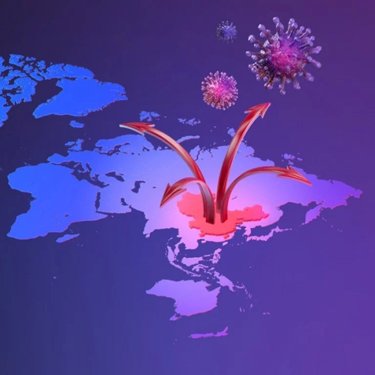
Harvard2thebighouse takes on Nature magazine’s claim that the Wuhan Virus could not possibly have been deliberately manufactured in a Communist Chinese Biological Weapons Laboratory.
Maybe you shouldn’t blindly believe everything you read? Even if the source has a pretty solid reputation?
Nature magazine has censored over 1,000 articles at the request of the Chinese government over the past several years. And it seems pretty clear that their recent article, “The proximal origin of SARS-CoV-2†is just one more example of their influence. China bought off the head of Harvard’s chemistry department, you don’t think they could buy off run-of-the-mill research scientists scrambling for tenure and funding and publication? It’s absolutely horrific that so many scientists and researchers are taking part in what’s really clearly a disinformation campaign orchestrated by the Chinese Communist Party, and willfully spreading a smokescreen about something that’s already killed thousands and is projected to kill millions more across the planet.
And while the mainstream corporate media mindless regurgitates claims from the Chinese government that are falsifiable with the simplest of google searches, allowing the public to be lulled into a false sense of security and complacency, and Reddit rapidly censors and moderates anything that might indicate that this virus leaked from a Chinese lab and so the Chinese government is to blame for this pandemic – sites like ZeroHedge, that have been at the forefront of keeping the lines of investigation open, have been banished from Twitter and marginalized.
Detailed rebuttal follows.
Interesting read.
HT: Kimball Corson.
22 Jan 2020

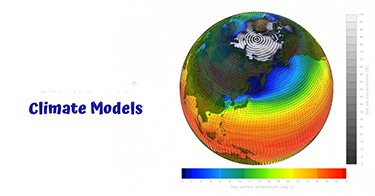
Larry Kummer suggests that we stop the silliness and end the Global Warming/Climate Change Debate the right way: with serious science.
Climate models are the center ring of the climate policy debate. Policy-makers need to know that models’ forecasts provide a robust basis for policies that will shape the economy and society of 21st century America – and the world.
That requries validation of models by experts. Human nature being what it is, those experts should be unaffiliated with the groups that designed and run the models (an insight from drug effectiveness testing). The cost of such a project would be pocket change compared to its importance.
America has a wealth of people and institutions capable of doing this. The National Academy of Sciences could be the lead agency in a Federal project to validate climate models. They could mobilize experts in the required wide range of fields.
Operational leadership could be provided by the Verification and Validation Committee of the American Society of Mechanical Engineers (ASME). See their Guide for Verification and Validation in Computational Solid Mechanics, their Standard for Verification and Validation in Computational Fluid Dynamics and Heat Transfer, and An Illustration of the Concepts of Verification and Validation in Computational Solid Mechanics. NOAA and NASA could assist. There are probably other expert groups that could help.
This is the opposite of relying on blogs and academic journals to lead the policy debate (a process that would be considered primitive by a colony of cherrystone clams).
This is the opposite of the IPCC’s methodology. It is focused, not broad. It requires a review of climate models by experts unaffiliated with their creation and operation. It uses proven methods relied upon in science, engineering, and business.
The policy gridlock has consumed scarce political resources for several decades, diverting attention from other severe threats (e.g., destruction of ocean ecosystems). If climate alarmists are correct, the gridlock burns time needed for action. Even if they are wrong, these kinds of hot political debates can put fanatics in power – with horrific consequences.
If implemented, this project will not change the climate. But it could break the gridlock. If it shows that models are reliable guides, it could quickly make effective public policy possible.
Why would we continue to rely on the processes which have failed for so long when there is an obvious, easy, and relatively fast alternative?
RTWT
14 Jun 2019
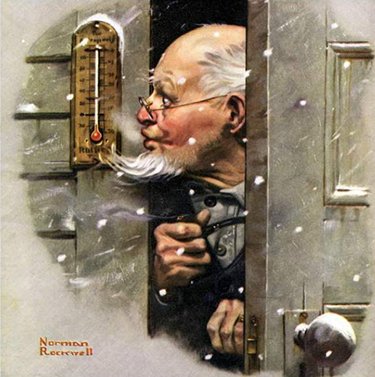
Norman Rockwell, 15 Below.
https://www.facebook.com/sciblings/photos/a.10154777555055088/10162009697800088/?type=3&theater:
Short answer as to why Americans use Fahrenheit – it’s people who want to know the temperature.
Fahrenheit is how hot it feels to humans.
Celsius is how hot it feels to water.
Kelvin is how hot it feels to atoms.
We’re all atoms, we’re all primarily water, but we are human.
/div>

Feeds
|













